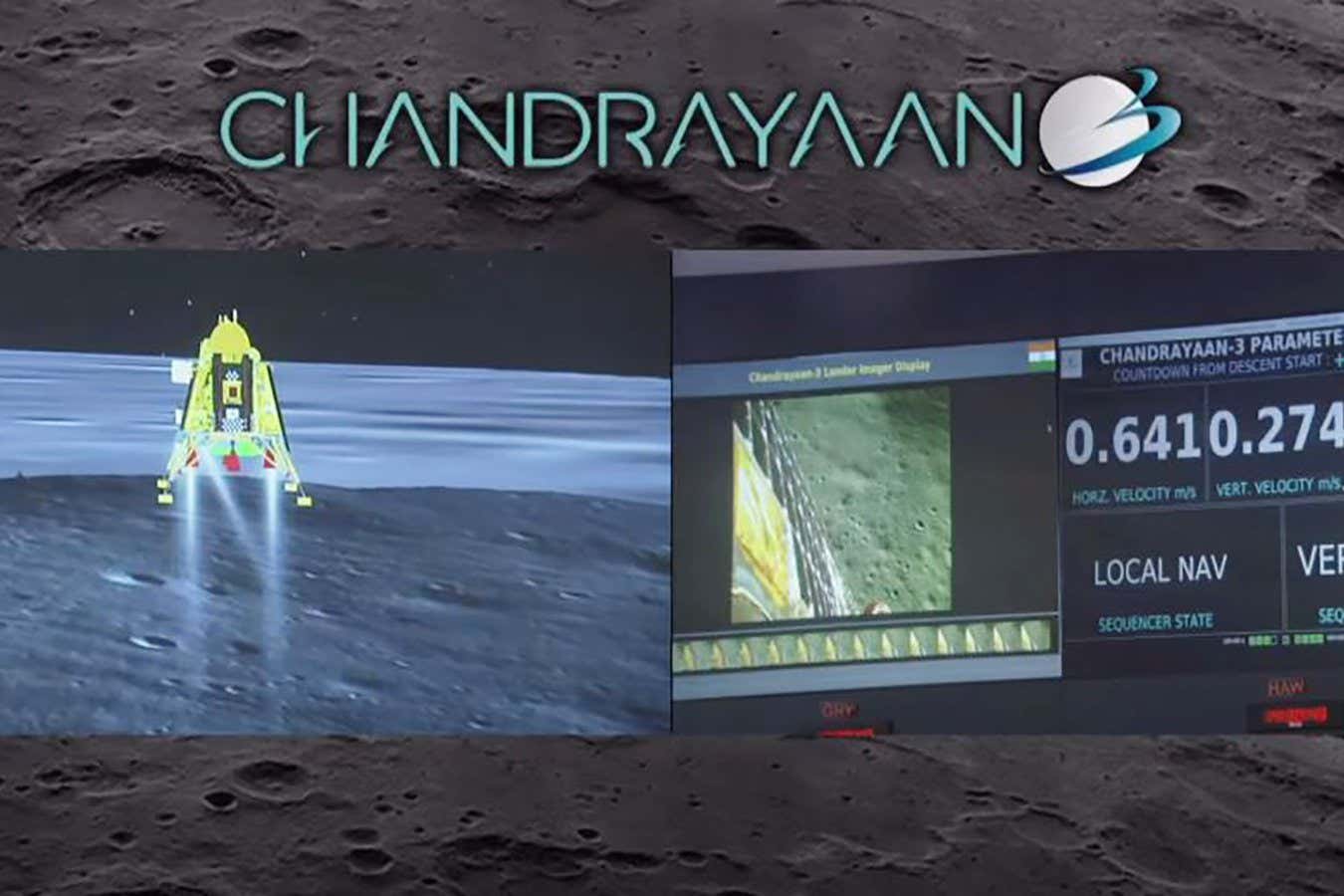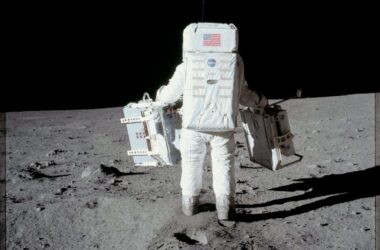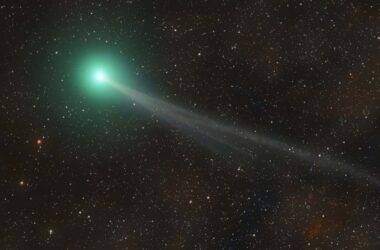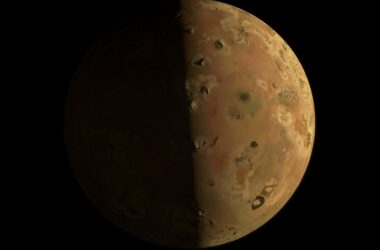The Chandrayaan-3 moon landing as seen on screens at ISRO, India’s national space agency
India has become the fourth country to successfully land an intact craft on the moon. Its Chandrayaan-3 mission touched down near the lunar south pole at 12:32 GMT, making India the first nation to explore the potentially water-rich polar region.
The Indian Space Research Organisation (ISRO)’s Chandrayaan-3, which derives its name from the Sanskrit word for “mooncraft”, took off onboard a Launch Vehicle Mark-III rocket from the southern state of Andhra Pradesh on 14 July. It traveled about 380,000 kilometers over six weeks to reach the moon.
According to ISRO, the landing took place 40 days, 3 hours, and 29 minutes after launch.
One of the objectives of the mission was to place the Vikram lander at a spot with water reserves, potentially enabling the establishment of a permanent lunar base.
Chandrayaan-3 slowed down while in orbit, hovered stationary at 150 meters above the surface, and then made a slow vertical descent to successfully land. Indian Prime Minister Narendra Modi remotely addressed mission control, stating that “India is now on the moon.”
“India’s successful moon mission is not just India’s alone. This success belongs to all of humanity, and it will help moon missions of other countries in the future. I’m confident that all countries of the world, including those from the Global South, are capable of achieving such feats. We can all aspire to the moon and beyond,” said Modi.
Shri M. Sankaran, director of ISRO’s U R Rao Satellite Centre, expressed his satisfaction with the mission, stating: “Today, we have achieved what we set out to achieve in 2019. It was delayed by about four years, but we have done it.” He also mentioned India’s plans to send a human into space and a spacecraft to Mars.
Employees of the Indian Space Research Organisation (ISRO) celebrate after the landing of the Chandrayaan-3 mission on the moon on 23 August
Abhishek Chinnappa/Getty Images
The previous Chandrayaan-2 mission in 2019 ended in failure when a software glitch caused its Vikram lander to crash into the moon’s surface along with the rover it carried, named Pragyan. Chandrayaan-1, an earlier mission, consisted of a lunar orbiter and a probe designed to impact the moon’s surface. In contrast, Chandrayaan-3 is focused on a soft landing and scientific research.
Chandrayaan-3 is a repeat of the Chandrayaan-2 mission, except it does not include an orbiter. The Vikram lander and rover communicate directly with Earth, eliminating the need for an intermediary satellite. The rover is expected to operate for only two weeks in the challenging lunar environment.
Prior to India’s successful landing, only the United States, the Soviet Union, and China had achieved intact lunar landings. An attempt by a Japanese start-up in April ended unsuccessfully when their craft crashed into the surface. Russia’s recent moon mission, its first in nearly 50 years, also failed when the Luna 25 lander slammed into the surface after an engine firing mishap.
Topics:








